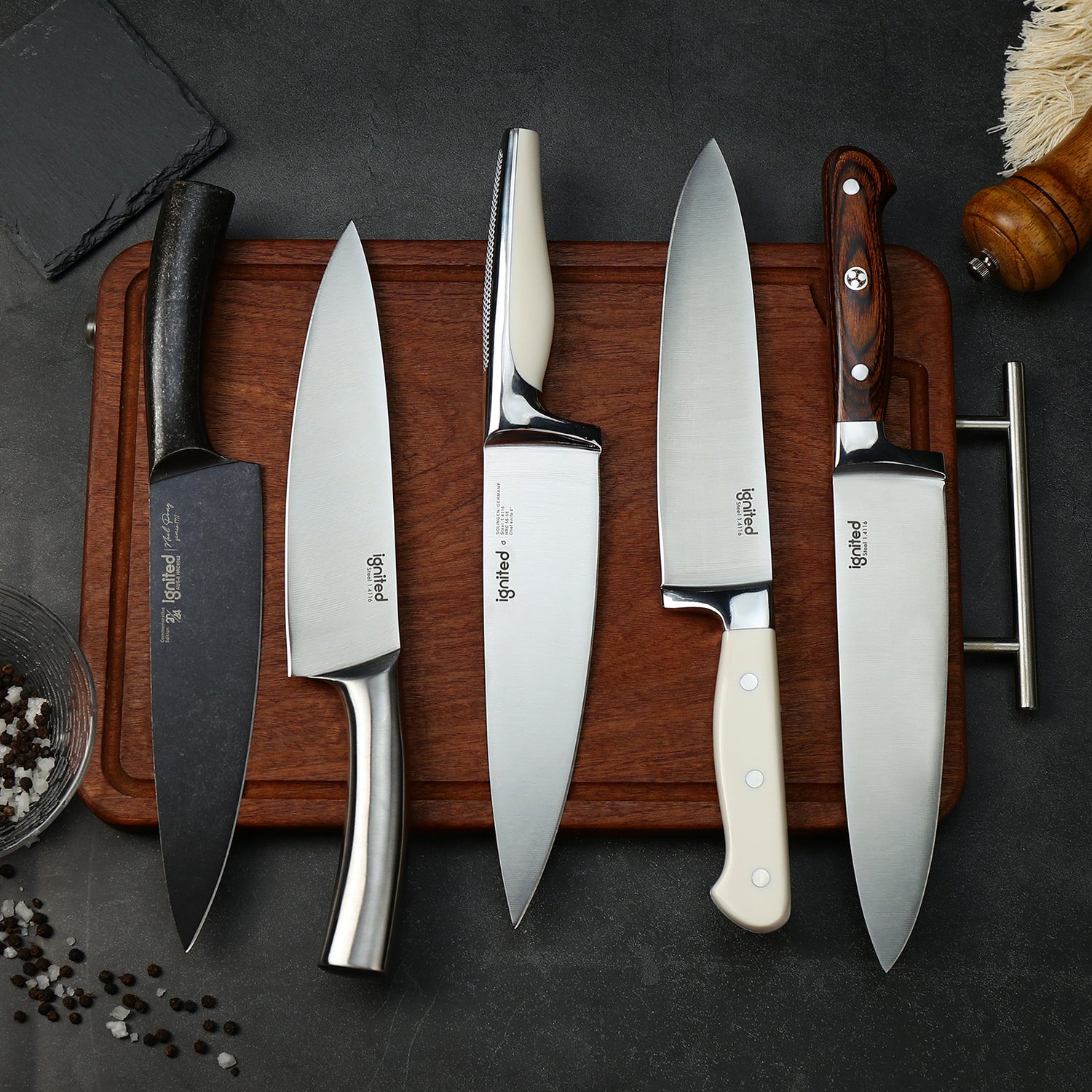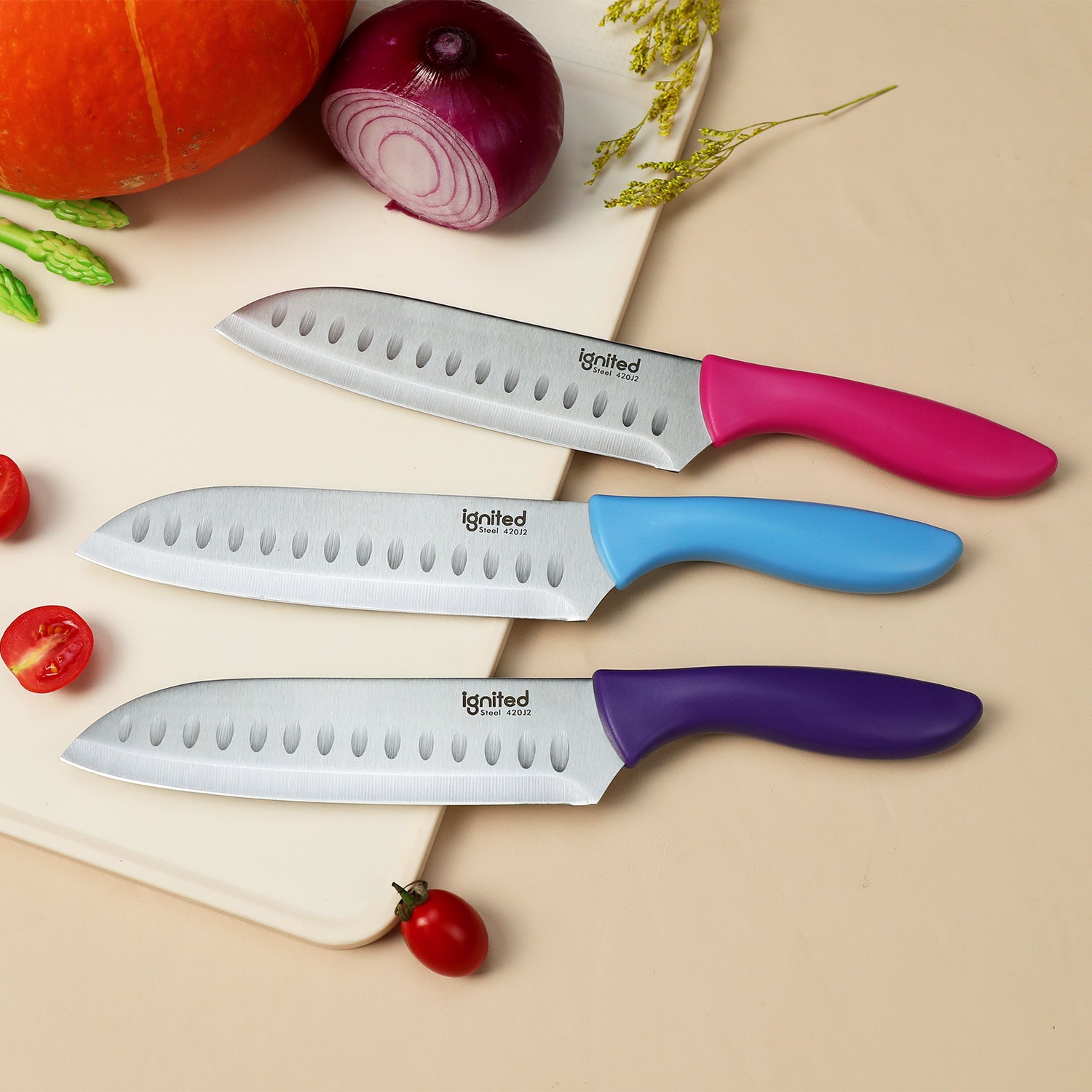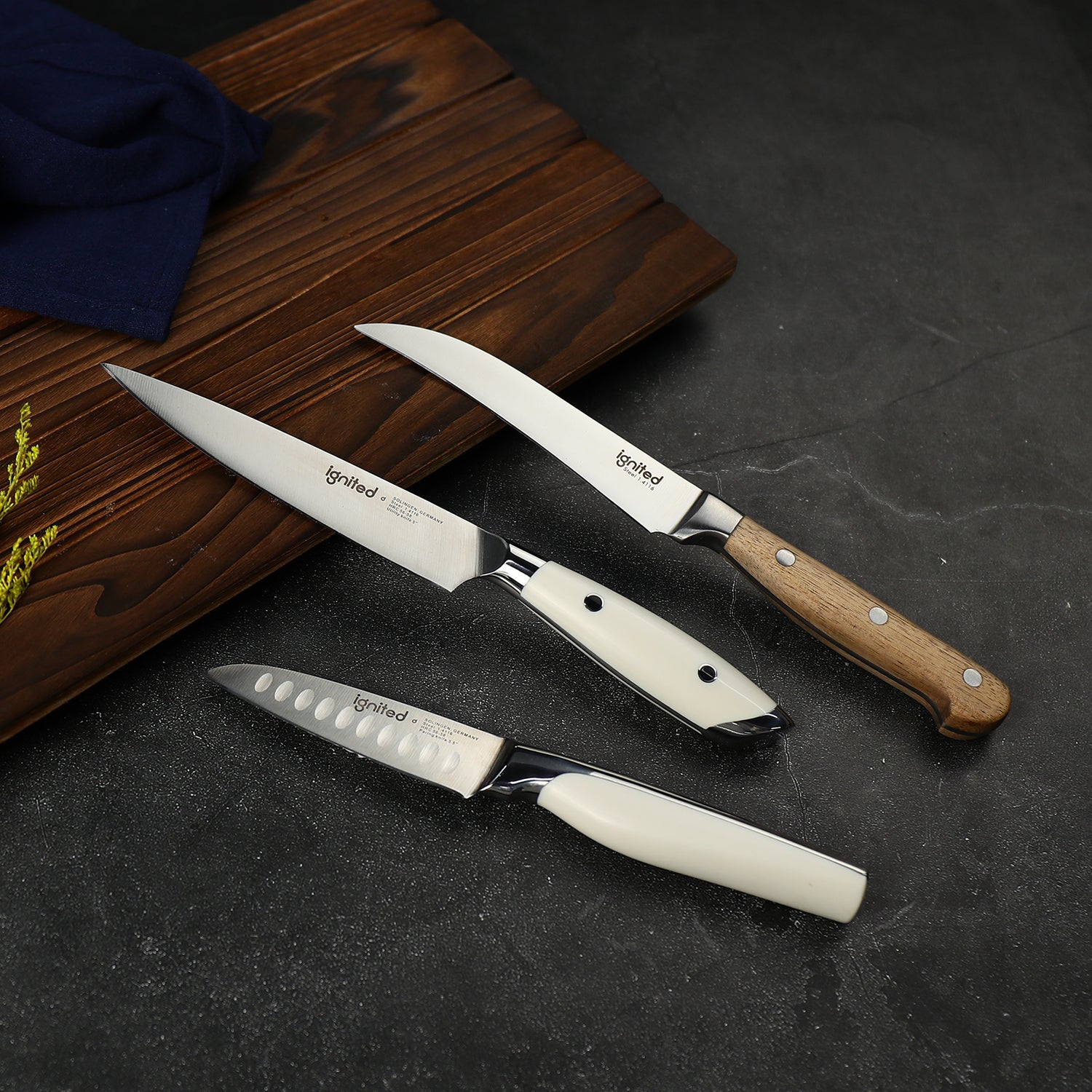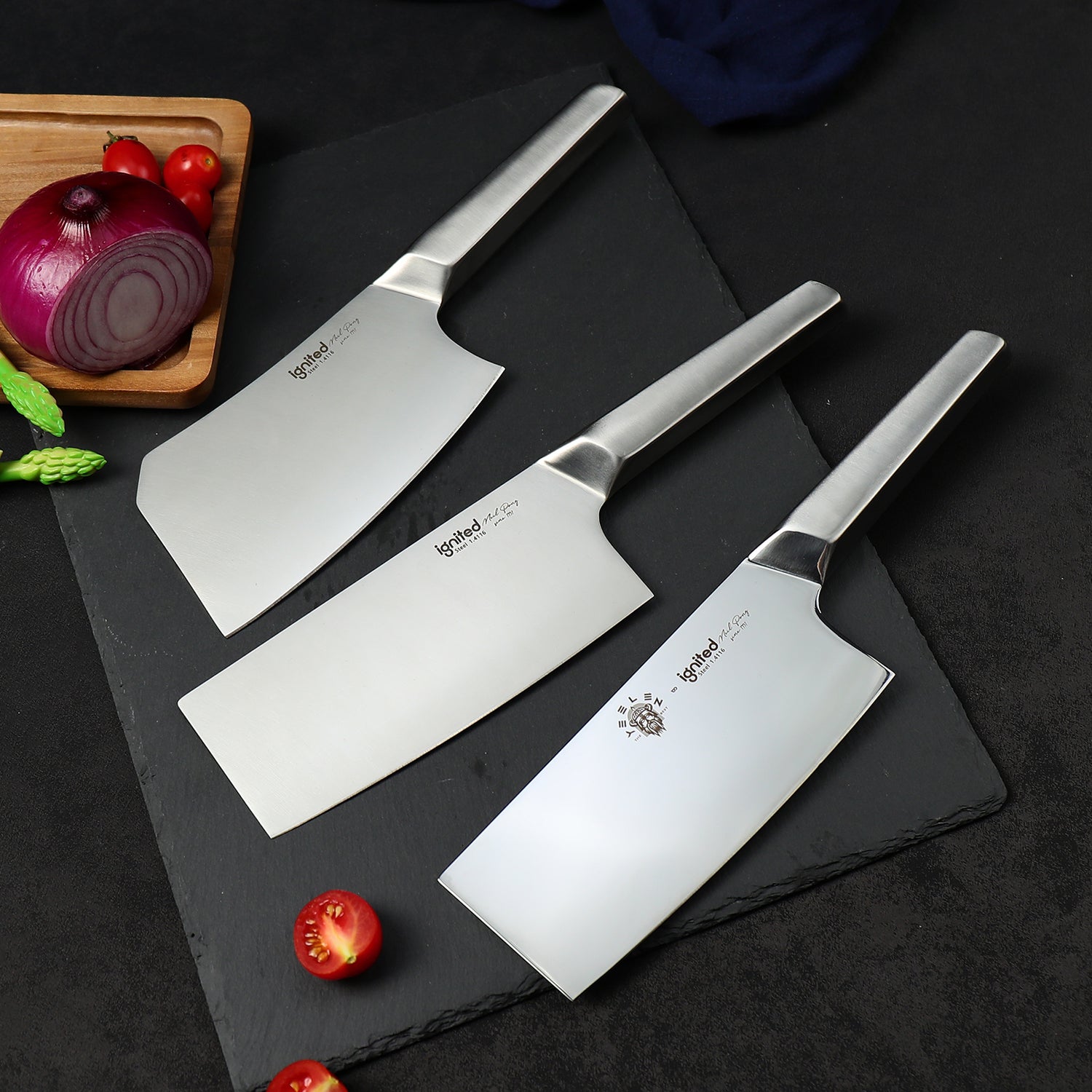Table of Contents
Why Knife Selection Matters Common Knives Used for Cutting Meat Knife Type Comparison by Task SummaryWhy Knife Selection Matters
Choosing the right knife for cutting meat is essential for safety, efficiency, and food quality. A suitable knife ensures cleaner cuts, better texture, and less muscle fiber damage—especially important for presentation and even cooking.
Common Knives Used for Cutting Meat
- Slicing Knife: Long, thin blade ideal for cutting large cooked meats like roasts or brisket into even slices.
- Butcher Knife: Heavy-duty with a curved blade, useful for breaking down larger cuts of raw meat or trimming fat.
- Boning Knife: Narrow, flexible blade designed to separate meat from bone with precision.
- Carving Knife: Similar to a slicing knife but typically stiffer, good for cooked meat like turkey or ham.
- Chef’s Knife: Versatile general-purpose knife that can handle meat, though not specialized for it.
- Cleaver: Thick, heavy blade used for cutting through bones or tough cartilage.
Knife Type Comparison by Task
| Task | Recommended Knife | Reason |
|---|---|---|
| Slicing cooked meat (roast, ham) | Slicing or Carving Knife | Long blade allows smooth, thin cuts |
| Removing bones from meat | Boning Knife | Thin and flexible for precision work |
| Breaking down large cuts | Butcher Knife or Cleaver | Powerful blade for heavy-duty cutting |
| General meat preparation | Chef’s Knife | Good all-around choice, not specialized |
Summary
The best knife for cutting meat depends on the specific task. For clean slices of cooked meat, a slicing or carving knife works best. For breaking down raw cuts, a butcher knife or cleaver is more effective. Boning knives are essential for precision work near bones, while chef’s knives offer flexibility for everyday kitchen use. Choosing the right tool ensures safety, precision, and better cooking results.





